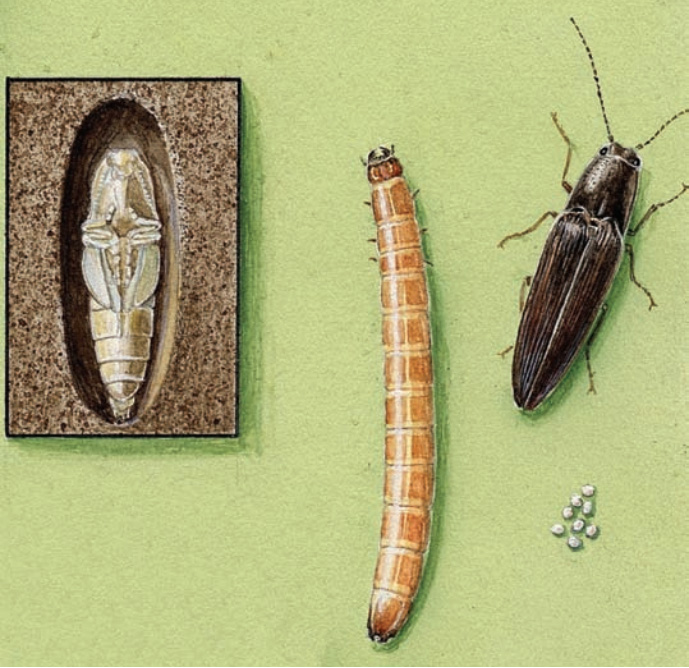
Category: Beetles
Click beetles, Wireworm (Coleoptera: Elateridae)
Biology and life history: The adult beetles are usually dark and small (< 1 inch) but may vary in color and size. The corners of the posterior part of their thorax are pointed toward the abdomen (see image). Some species bear spots and/or lines on their thorax and elytra (i.e., hardened outer wings). Most adult click beetle species emerge between April and June to mate and lay their eggs in topsoil. Click beetles are attracted to grasslands, including fields of small grains. Therefore, fields rotating out of small grain or pasture years are at high risk for wireworm presence. After the eggs hatch, the larvae can stay in the soil for multiple years (2-5 years for most species). The larvae are known as "wireworms," a name that reflects their wire-like shape, hard body, and often shiny color (see image). Wireworms are no longer than 1-inch, with their size varying based on their species and developmental instar.
Host plants and crop damage: The adult beetles do not cause damage. Wireworms, however, voraciously feed on the below-ground tissues of a wide range of uncultivated and cultivated plants, including crops such as potatoes, legumes, sugar beets, and cereals. Wilting, delayed growth and seedling death are examples of the general foliar symptoms which may indicate wireworm feeding. The direct feeding damage by wireworm results in yield and quality losses. They can also cause indirect damage by facilitating the invasion of pathogens through wounding underground tissues (e.g., potato and sugar beet) or the establishment of weeds due to the stand thinning resulting from their feeding on seed, emerging sprouts, and young seedlings.
Management: Predatory beetles, spiders, birds, entomopathogenic nematodes, and entomopathogenic fungi are a few examples of the common natural enemies of wireworms. Crop rotation, soil packing, and cultivation are a few practices that could negatively impact wireworm populations and feeding. However, natural enemies and cultural practices per se may not offer immediate relief, and the integration of chemical control is often needed to mitigate damage. Neonicotinoid seed treatments are effective, mostly as feeding deterrents, and are not expected to cause significant wireworm mortality. However, some insecticides can reduce wireworm populations.
